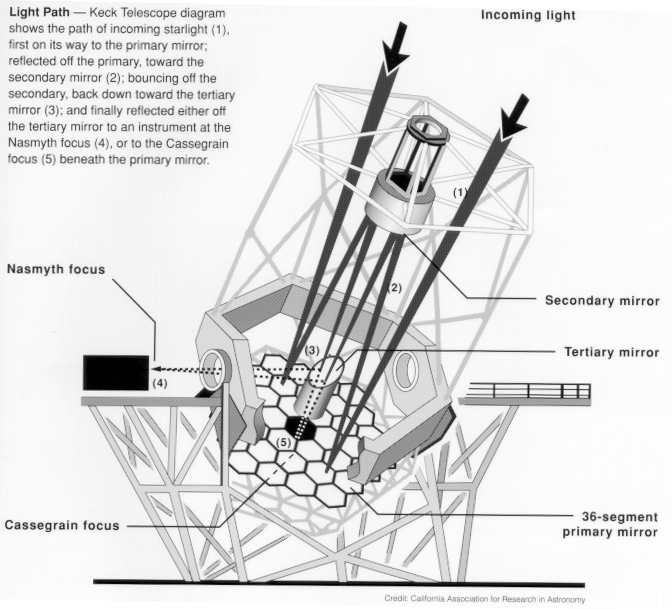
Modern telescopes have mirrors made of a material called vitro ceramic, which keeps its size and shape in spite of changes in temperature, covered with a very thin layer of aluminium. Domestic mirrors have glass in front of the aluminium, to protect it, but that means that the light passes through the glass twice – coming and going – which degrades the image. So telescope mirrors have the aluminium on the surface,where it gives the best possible image, until it degrades.
When that happens, the aluminium needs replacing. The engineers take the mirror off the telescope, then the optics specialists clean it thoroughly, and put it in a vacuum tank. Once the air has been pumped out, they send an electric current through aluminium fuses which vapourises the fuses, and the vapour gently settles on the mirror.
Any harmful chemicals are sent down to sea-level for proper disposal.
Gran Telescpio Canarias has just gone through this process with the tertiary mirror – the one in the centre of the diagram, which sends the light sideways to the Nasmyth focus (marked on the diagram in black.) The tertiary is elliptical, and measures about 100 x 140 cm. I don’t know what it cost, but I’d take a wild guess at 300,000€. It’s also very important not to get even the tiniest scratch on the surface. Consequently, taking it off the telescope is a major operation. This is the first time the tertiary has been realuminized in three years of operation.
